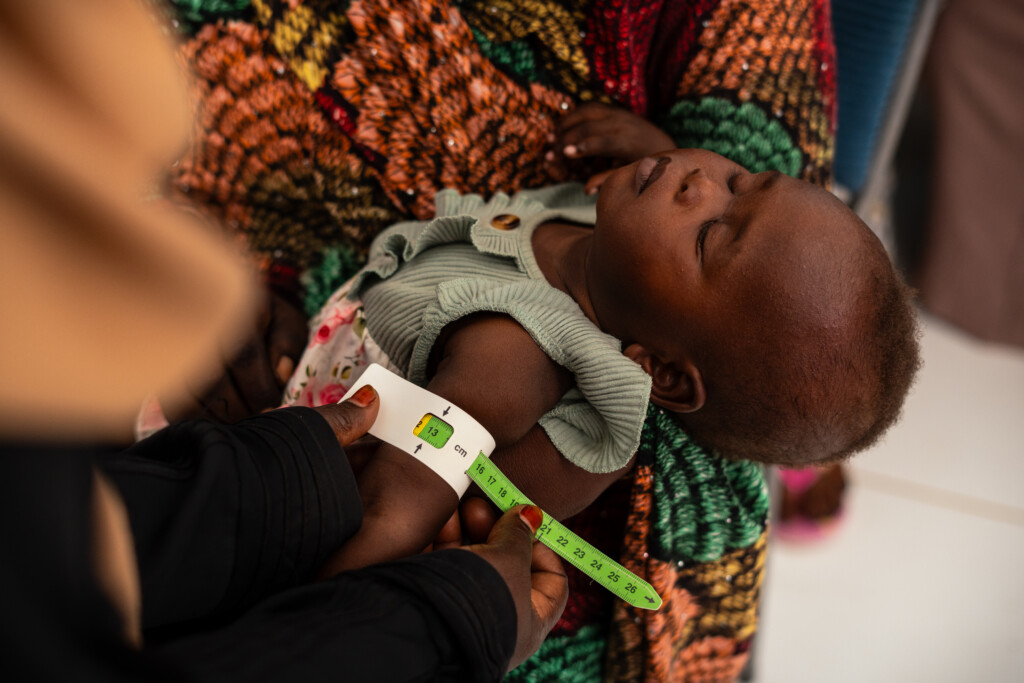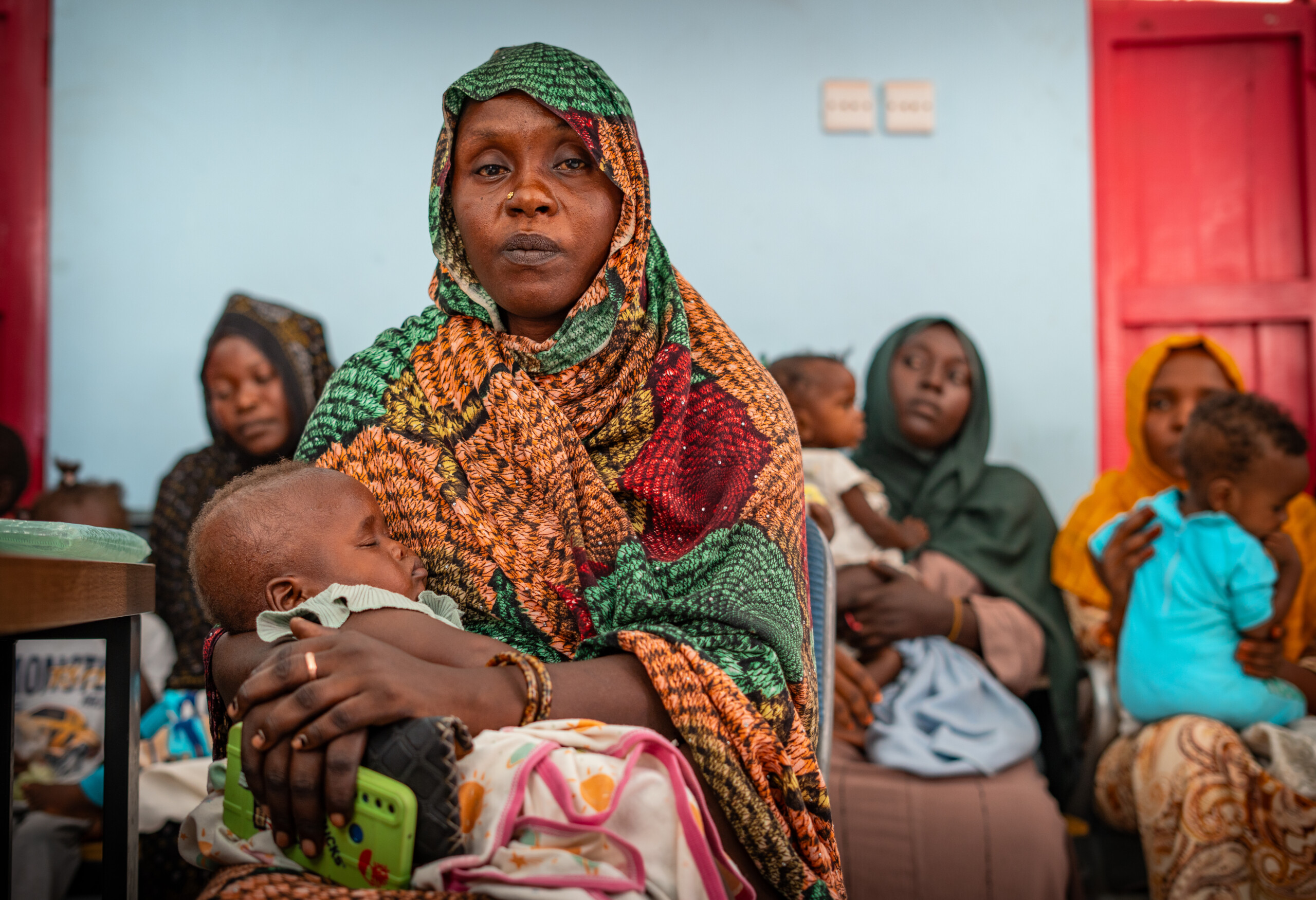WFP calls for global focus on child malnutrition as cases soar amid famine in Sudan

A child is assessed at a WFP-supported health centre in the Philippe neighbourhood in Port Sudan (Photo: © WFP / Abubakar Garelnabei)
As global leaders and experts convene in Paris for the fourth Nutrition for Growth Summit, the UN World Food Programme (WFP) is calling for greater focus and action to prevent ‘wasting’ – the deadliest form of malnutrition – before its life-threatening impacts are felt in children. Action before malnutrition takes hold is crucial, WFP says.
“We must prevent child malnutrition before it ever takes hold,” says WFP Executive Director Cindy McCain in a statement today. “If we fail to act, we are condemning millions of children to a lifetime of suffering. WFP has the knowledge and tools to stop malnutrition in its tracks—what we need is investment and political will.”
The WFP statement underscores: Malnutrition does irreparable damage to a child’s physical and cognitive development, weakening immune systems, stunting growth, and limiting brain development. Malnutrition often begins during pregnancy which is why prevention programmes that target at risk mothers and children are essential. Acting early and fast is the only way to avoid the lifelong impact of wasting on a child’s health.

WFP says it needs $1.4 billion to deliver malnutrition prevention and treatment programmes for more than 30 million mothers and children in 56 countries in 2025. “In 2024, WFP prevented wasting in 13.8 million mothers and children through the provision of fortified foods, nutrient-dense supplements, cash or vouchers for nutritious meals and nutritionally adequate food baskets. Additionally, the agency helped 14 million more individuals through its emergency malnutrition treatment programmes.”
Malnutrition is rising worldwide due to a relentless wave of global crises including conflict, economic instability, and climate-related emergencies: in the 15 countries most affected by malnutrition, 33 million children suffer from wasting.
“The Nutrition for Growth Summit is a pivotal opportunity to secure a better future for millions of children,” said Executive Director McCain. “Governments, donors, and partners must step up and invest in nutrition now—a healthy child today means a stronger, more resilient world tomorrow. WFP is being forced to make tough choices, prioritizing treatment over prevention, meaning we can only help children when they’re already sick. With flexible and predictable funding, we can act early, break this cycle, and save more lives.”
‘Malnutrition is responsible for half of all deaths among children under five years old. For those who survive, malnutrition reduces their ability to learn, earn and thrive as adults, trapping them in a cycle of poverty and poor health…’ – WFP
Without urgent funding, WFP will be forced to suspend prevention programmes in countries with some of the largest burdens of child malnutrition. In Afghanistan, for example, prevention programmes will cease from May, while in Syria and DRC such programmes will be reduced from June unless additional funds are received. In Yemen, where up to one-third of children under five are wasted, WFP has only been able to implement one prevention programme in one district in the last 12 months – and this will end in May without additional funding.
Malnutrition is responsible for half of all deaths among children under five years old. For those who survive, malnutrition reduces their ability to learn, earn and thrive as adults, trapping them in a cycle of poverty and poor health.
Investing in malnutrition prevention during the first 1,000 days improves individual health and strengthens economies: low- and middle-income countries lose an average of 10% of GDP due to malnutrition through increased healthcare costs and lowered human capital. Prevention programmes also reduce the burden on treatment programmes, ensuring resources are available for those already suffering from malnutrition.
In 2024, admissions for severe acute malnutrition (SAM) in Sudan rose by 43.8 per cent compared to 2023, with 431,015 children treated—the highest annual total since the programme’s inception, UNICEF states in its Sudan Humanitarian Annual Situation Report over 2024.

Thousands face starvation
As previously reported by Radio Dabanga, intense fighting in and around Zamzam camp in the North Darfur capital El Fasher forced the WFP to temporarily pause the distribution of life-saving food and nutrition assistance in the famine-hit camp for displaced people in February. Escalating violence left WFP’s partners with no choice but to evacuate staff for safety, the organisation lamented in a statement at the time.
“Without immediate assistance, thousands of desperate families in Zamzam could starve in the coming weeks,” said WFP Laurent Bukera, Regional Director for Eastern Africa and acting Country Director for Sudan. “We must resume the delivery of life-saving aid in and around Zamzam safely, quickly and at scale. For that the fighting must stop, and humanitarian organizations must be granted security guarantees.”

In February, WFP and its partners only managed to provide 60,000 people with food vouchers, when heavy shelling forced the pause of aid operations earlier this month. The food vouchers allow families to purchase essential food supplies, such as cereals, pulses, oil and salt, directly from local markets which WFP helps to keep stocked through its local private sector retail network.
The recent violence has left Zamzam’s Central Market destroyed by shelling, pushing residents of the camp – estimated to be between 500,000 and one million people – further away from accessing essential food and supplies.
WFP and other partners have been working to deliver food and nutrition assistance to displaced people in and around North Darfur’s Zamzam camp. These people will not receive support until WFP is able to safely resume activities and get humanitarian assistance to the area, WFP says.
Darfur famine
Famine was confirmed in Zamzam last August. Since then, WFP has managed to transport just one convoy of humanitarian supplies into the camp despite repeated attempts. Poor road conditions during the rainy season, purposeful obstruction by the Rapid Support Forces, and fighting between the Rapid Support Forces and the SAF-affiliated joint forces along the route to Zamzam has frustrated WFP’s many attempts.
The closure of the Adre border in the first half of 2024 also prevented WFP from stockpiling food in Zamzam, which would have meant consistent support through the latter part of the year.












 and then
and then